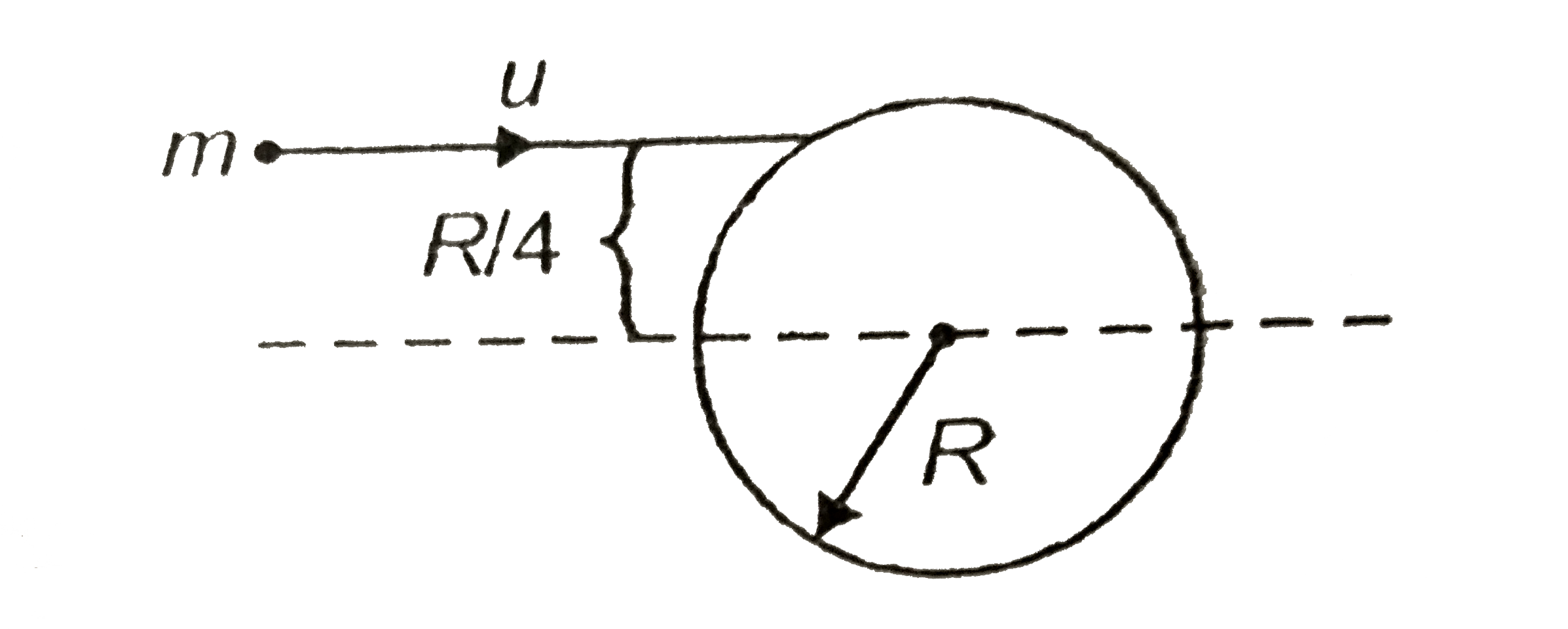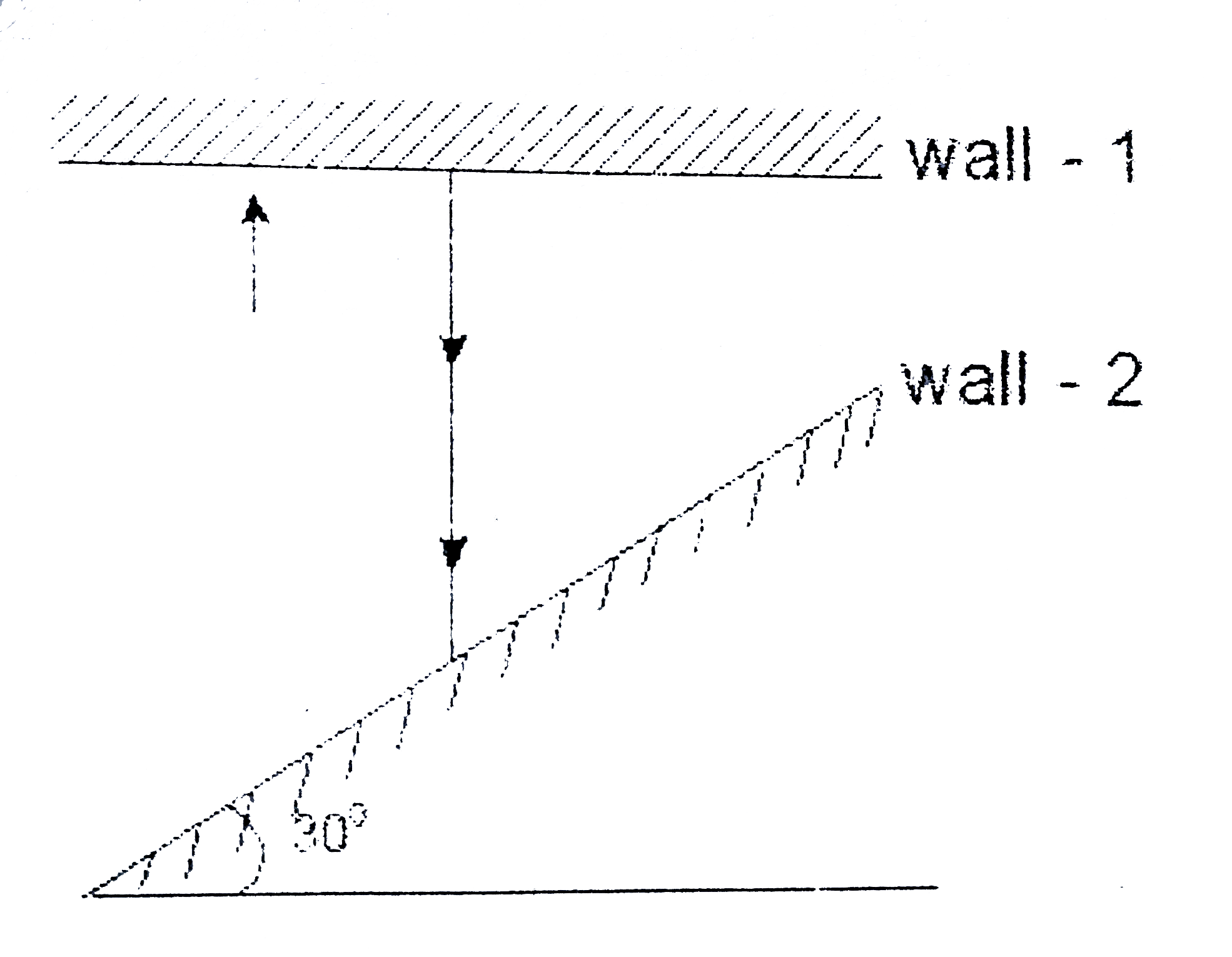A molecules in a gas container hits the wall with speed 200m/s at an angle 30∘ with the normal, and reboudns with the same speed. Is momentum conserved in the collision ? Is the collision elastic or inelastic ?

I . Velocity of molecule along the normal to the wall = 200cos30∘
m = mass of molecule
Momentum before collision
m×200cos30∘ ….(i)
In the above figure , here we are considering the molecule to be colliding with the horizontal wall of the conatiner . As the velocity of the molecule remains same before and after the collision , thus we can say that the initial kinetic energy of the system , i.e the molecule and the wall , remains same .
If we consider the system of the wall of teh container and the molecule , we can understand that there is no external force acting on the system . Thus , the momentum of the system will remain conserved . The momentum of the molecule colliding with the wall is equal to the momentum of the molecule of the molecular after collision and the rcoil momentum of the wall . As the recoil speed of the wall is negligible because it is very heavy as compared to the mass of the molecule , so the recoil momentum is zero .
Therefore , the collision between the molecule and the wall is elastic .
Topper's Solved these Questions
- BOOK - MODERN PUBLICATIONCHAPTER - WORK, ENERGY AND POWER EXERCISE - NCERT FILE (NCERT Additional Exercise)7videos
WORK, ENERGY AND POWER
- BOOK - MODERN PUBLICATIONCHAPTER - WORK, ENERGY AND POWER EXERCISE - NCERT FILE (Exemplar Problems Objective Questions)21videos
WORK, ENERGY AND POWER
- BOOK - MODERN PUBLICATIONCHAPTER - WORK, ENERGY AND POWER EXERCISE - Tough & Tricky (PROBLEMS)15videos
WORK, ENERGY AND POWER
- BOOK - MODERN PUBLICATIONCHAPTER - WAVESEXERCISE - CHAPTER PRACTICE TEST14videos
WAVES
Similar Questions
A and B are two identical balls. A moving with a speed of 6m/s, along the positive X-axis, undergoes a collision with B initially at rest. After collision, each ball moves along directions making angles of ±30∘ with the X-axis. What are the speeds of A and B after the collision ? I s this collision perfectly eleastic ?
View SolutionA body of mass m hits a wall with speed v at an angle of 30degree with normal and reflects at same angle from normal on other side of normal. The magnitude of change in linear momentum of the body is (Consider elastic collision)
View Solution
Knowledge Check
- Question 1 - Select One
A body of mass m hits a wall with speed v at an angle of 30o with normal and reflects at same angle from normal on other side of normal. The magnitude of change in linear momentum of the body is (Consider elastic collision)
A8√3mv2BmvC√3mvDZero - Question 2 - Select One
A ball of mass 'm' moves normal to a wall with a velocity 'u' and rebounds with the same speed. The change in momentum of the ball during the rebounding is
A2mu towards the wallB2mu away from the wallCzeroDmu away from the wall - Question 3 - Select One
If gas molecules undergo, inelastic collision with the walls of the container
Atemperature of the gas will increaseBtemperature of the gas will fallCpressure of the gas will increaseDboth temperature and the pressure change
A particle of mass m strikes a disc of radius R and mass m with a speed u as shown in the figure. What is the speed of the particle just after the collision if the collision is perfectly inelastic ?
 View Solution
View SolutionA body of mass m collides against a wall with the velocity v and rebounds with the same speed. Its magnitude of change of momentum is
View SolutionA ball of mass 3 kg collides with a wall with velocity 10 m/sec at an angle of 30° and after collision reflects at the same angle with the same speed. The change in momentum of ball in MKS unit is-
View SolutionIf gas molecules undergo, inelastic collision with the walls of the container
View SolutionMolecule of a gas in a container hits one wall (1) normally and rebounds back. It suffers number of collision and hits the opposite wall (2) which is at angle of 30∘ with wall 1. Assuming the collision to be elastic and the small collision time to be the same for both the walls. The magnitude of average force by walls and 2 are F1 and F2 provide to molecule during collision satisfy
 View Solution
View Solution

